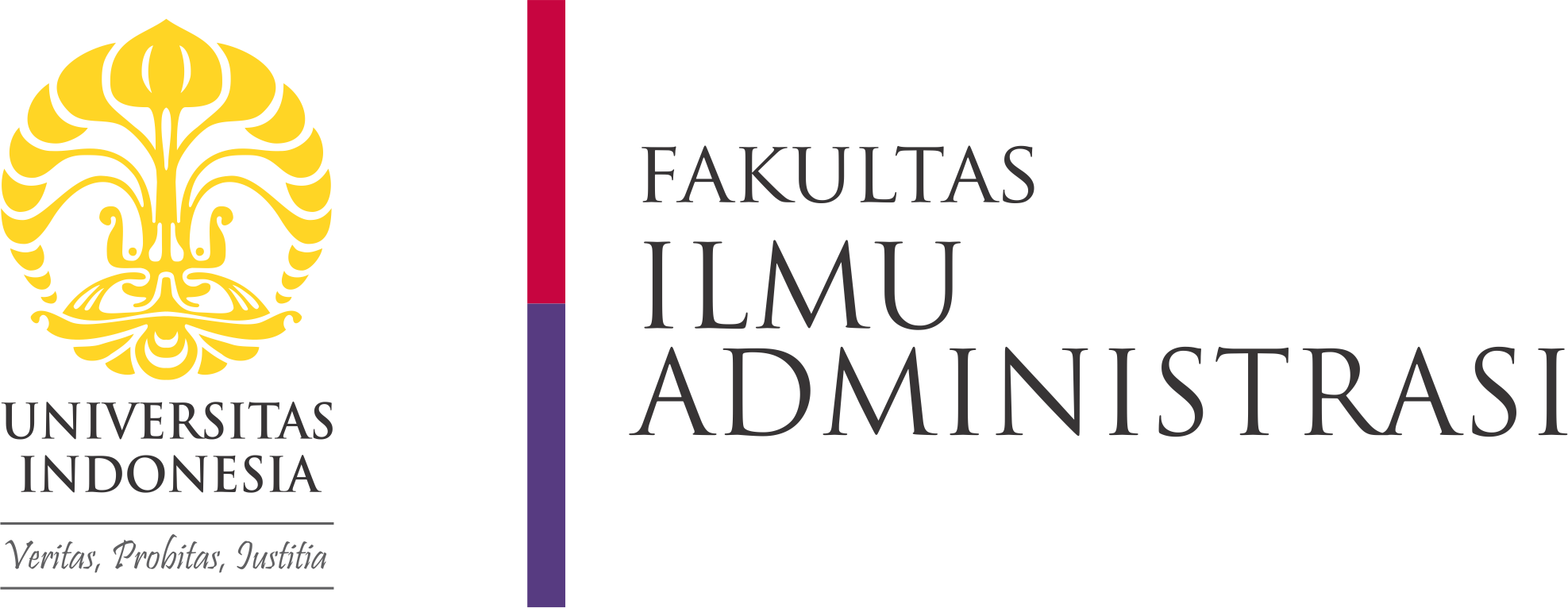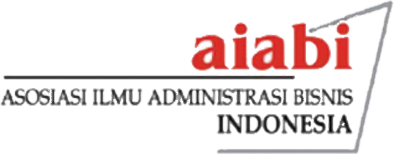Creative Commons License

This work is licensed under a Creative Commons Attribution-Share Alike 4.0 International License.
Abstract
Ransomware attacks on Islamic banking institutions can lead to a decline in public interest in saving. To stimulate the growth of savings, it is crucial to investigate the determinants influencing customer decision to save their money in Islamic banking institutions following a ransomware attack. This study implemented a unique approach in examining the impact of perceptions of cybersecurity and Sharia label on the decision to save in Sharia banks in Indonesia subsequent to a ransomware attack. It aims to explore the intervening role of trust and Word of Mouth (WOM) in information dissemination and analyze how the Sharia label can mitigate the risk of customer attrition, thereby maintaining the level of customer trust. This study employed a quantitative causal method, specifically a path analysis model. Data were collected through questionnaires sent to customers of Sharia banks in Indonesia selected using a probability sampling technique. The Structural Equation Model (SEM) with a Partial Least Squares (PLS) approach was utilized for analysis. The findings emphasize the significance of cybersecurity, Sharia label, and WoM in understanding customer decision to save in Sharia banks. This study thus offers valuable insights for Sharia banks, identifying areas in need of improvements in security and marketing policies and enabling more proactive strategies to ensure customer trust and enhance performance in facing growing challenges.
References
Abdullayeva, F. (2023). Cyber resilience and cyber security issues of intelligent cloud computing systems. Results in Control and Optimization, 100268. https://doi.org/10.1016/j.rico.2023.100268
Abdullrahim, N., & Robson, J. (2017). The importance of service quality in British Muslim’s choice of an Islamic or non-Islamic bank account. Journal of Financial Services Marketing, 22(2), 54–63. https://doi.org/10.1057/s41264-017-0025-6
Ahmad, S., Lensink, R., & Mueller, A. (2023). Uptake, use, and impact of Islamic savings: Evidence from a field experiment in Pakistan1. Journal of Development Economics, 163, 103098. https://doi.org/10.1016/j.jdeveco.2023.103098
Aityoussef, A., & Belhcen, L. (2022). A predictive model of building initial trust in sharing economy: MULTI-DIMENSIONAL analysis of facebook users in Morocco. Technology in Society, 71, 102111. https://doi.org/10.1016/j.techsoc.2022.102111
Akter, S., Ali, S., Fekete-Farkas, M., Fogarassy, C., & Lakner, Z. (2023). Why Organic Food? Factors Influence the Organic Food Purchase Intension in an Emerging Country (Study from Northern Part of Bangladesh). Resources, 12(1), 1–19. https://ideas.repec.org//a/gam/jresou/v12y2023i1p5-d1023264.html
Alshammari, M. H., Grande, R. A. N., & Berdida, D. J. E. (2023). Structural equation modelling of ethicomoral values and competence of nurses during the COVID-19 pandemic. Collegian, 31(4). https://doi.org/10.1016/j.colegn.2023.03.009
An-Na’im, A. A. (2016). Dekonstruksi Syariah. Ircisod.
Bajwa, I. A., Ahmad, S., Mahmud, M., & Bajwa, F. A. (2023). The impact of cyberattacks awareness on customers’ trust and commitment: An empirical evidence from the Pakistani banking sector. Information & Computer Security, 31(5), 635–654. https://doi.org/10.1108/ICS-11-2022-0179
Boyette, T., & Ramsey, J. R. (2019). Does the messenger matter? Studying the impacts of scientists and engineers interacting with public audiences at science festival events. Journal of Science Communication, 18(2), A02. https://doi.org/10.22323/2.18020202
Brannon, D. C., & Samper, A. (2018). Maybe I Just Got (Un)lucky: One-on-One Conversations and the Malleability of Post-Consumption Product and Service Evaluations. Journal of Consumer Research, 45(4), 810–832. https://doi.org/10.1093/jcr/ucy028
Cachero-Martínez, S., & Vázquez-Casielles, R. (2021). Building consumer loyalty through e-shopping experiences: The mediating role of emotions. Journal of Retailing and Consumer Services, 60, 102481. https://doi.org/10.1016/j.jretconser.2021.102481
Calvet, L. E., Celerier, C., Sodini, P., & Vallee, B. (2023). Can Security Design Foster Household Risk-Taking?. The Journal of Finance, 78(4), 1917–1966. https://doi.org/10.1111/jofi.13232
Cardoso, A., Paulauskaitė, A., Hachki, H., Figueiredo, J., Oliveira, I., Rêgo, R., Silva, R., & Meirinhos, G. (2022). Analysis of the Impact of Airbnb Brand Personality on Consumer Involvement and Institutional Trust. Journal of Open Innovation: Technology, Market, and Complexity, 8(3), Article 3. https://doi.org/10.3390/joitmc8030104
Ceresnak, R., Kvet, M., & Matiasko, K. (2021). Increasing Security of Database During Car Monitoring. Transportation Research Procedia, 55, 118–125. https://doi.org/10.1016/j.trpro.2021.06.013
Chi, O. H., Chi, C. G., Gursoy, D., & Nunkoo, R. (2023). Customers’ acceptance of artificially intelligent service robots: The influence of trust and culture. International Journal of Information Management, 70, 102623. https://doi.org/10.1016/j.ijinfomgt.2023.102623
Condie, S. A., & Condie, C. M. (2021). Stochastic events can explain sustained clustering and polarisation of opinions in social networks. Scientific Reports, 11(1), Article 1. https://doi.org/10.1038/s41598-020-80353-7
Corallo, A., Latino, M. E., Menegoli, M., De Devitiis, B., & Viscecchia, R. (2019). Human Factor in Food Label Design to Support Consumer Healthcare and Safety: A Systematic Literature Review. Sustainability, 11(15), Article 15. https://doi.org/10.3390/su11154019
Cui, F., Lin, D., & Huang, Y. (2015). The Impact of Perceived Security on Consumer E-Loyalty: A Study of Online Tourism Purchasing. 2015 IEEE First International Conference on Big Data Computing Service and Applications, 314–322. https://doi.org/10.1109/BigDataService.2015.41
Durazzi, F., Müller, M., Salathé, M., & Remondini, D. (2021). Clusters of science and health related Twitter users become more isolated during the COVID-19 pandemic. Scientific Reports, 11(1), Article 1. https://doi.org/10.1038/s41598-021-99301-0
Emberger-Klein, A., & Menrad, K. (2018). The effect of information provision on supermarket consumers’ use of and preferences for carbon labels in Germany. Journal of Cleaner Production, 172, 253–263. https://doi.org/10.1016/j.jclepro.2017.10.105
Eriksson, K., & Hermansson, C. (2018). How relationship attributes affect bank customers’ saving. International Journal of Bank Marketing, 37(1), 156–170. https://doi.org/10.1108/IJBM-09-2017-0194
Errajaa, K., Hombourger-Barès, S., & Audrain-Pontevia, A.-F. (2022). Effects of the in-store crowd and employee perceptions on intentions to revisit and word-of-mouth via transactional satisfaction: A SOR approach. Journal of Retailing and Consumer Services, 68, 103087. https://doi.org/10.1016/j.jretconser.2022.103087
Filieri, R., Acikgoz, F., & Du, H. (2023). Electronic word-of-mouth from video bloggers: The role of content quality and source homophily across hedonic and utilitarian products. Journal of Business Research, 160, 113774. https://doi.org/10.1016/j.jbusres.2023.113774
Fund, E., Fund, L., & Fund, C. (2017). Cyber Risk, Market Failures, and Financial Stability. IMF Working Papers, 17, 1. https://doi.org/10.5089/9781484313787.001
Gorton, M., Tocco, B., Yeh, C.-H., & Hartmann, M. (2021). What determines consumers’ use of eco-labels? Taking a close look at label trust. Ecological Economics, 189, 107173. https://doi.org/10.1016/j.ecolecon.2021.107173
Guo, J., Susilo, Y., Antoniou, C., & Pernestål, A. (2022). Word of mouth and behavioural intentions of the automated bus service. Cities, 126, 103668. https://doi.org/10.1016/j.cities.2022.103668
Gupta, S., Pandey, D. K., El Ammari, A., & Sahu, G. P. (2023). Do perceived risks and benefits impact trust and willingness to adopt CBDCs? Research in International Business and Finance, 66, 101993. https://doi.org/10.1016/j.ribaf.2023.101993
Hair, Jr., J. F., M. Hult, G. T., M. Ringle, C., & Sarstedt, M. (2017). A Primer on Partial Least Squares Structural Equation Modeling (PLS-SEM). Sage Publications.
Hair, Jr., J. F., Risher, J., Sarstedt, M., & Ringle, C. (2018). When to use and how to report the results of PLS-SEM. European Business Review, 31(1). https://doi.org/10.1108/EBR-11-2018-0203
Hartmann, C., Hieke, S., Taper, C., & Siegrist, M. (2018). European consumer healthiness evaluation of ‘Free-from’ labelled food products. Food Quality and Preference, 68, 377–388. https://doi.org/10.1016/j.foodqual.2017.12.009
Hidi, S. E., & Renninger, K. A. (2019). Interest Development and Its Relation to Curiosity: Needed Neuroscientific Research. Educational Psychology Review, 31(4), 833–852. https://doi.org/10.1007/s10648-019-09491-3
Hosen, M., Ogbeibu, S., Lim, W. M., Ferraris, A., Munim, Z. H., & Chong, Y.-L. (2022). Knowledge sharing behavior among academics: Insights from theory of planned behavior, perceived trust and organizational climate. Journal of Knowledge Management, ahead-of-print.
Hueros-Barrios, P. J., Rodríguez Sánchez, F. J., Martín, P., Jiménez, C., & Fernández, I. (2022). Addressing the cybersecurity vulnerabilities of advanced nanogrids: A practical framework. Internet of Things, 20, 100620. https://doi.org/10.1016/j.iot.2022.100620
Järvenpää, M., Hoque, Z., Mättö, T., & Rautiainen, A. (2023). Controllers’ role in managerial sensemaking and information trust building in a business intelligence environment. International Journal of Accounting Information Systems, 50, 100627. https://doi.org/10.1016/j.accinf.2023.100627
Jin, J., Li, N., Liu, S., & Khalid Nainar, S. M. (2023). Cyber attacks, discretionary loan loss provisions, and banks’ earnings management. Finance Research Letters, 54, 103705. https://doi.org/10.1016/j.frl.2023.103705
Johri, A., & Kumar, S. (2023). Exploring Customer Awareness towards Their Cyber Security in the Kingdom of Saudi Arabia: A Study in the Era of Banking Digital Transformation. Human Behavior and Emerging Technologies, 2023, 1–10. https://doi.org/10.1155/2023/2103442
Jorge-García, D., Estruch-Guitart, V., & Aragonés-Beltrán, P. (2023). How geographical factors and decision-makers’ perceptions influence the prioritization of ecosystem services: Analysis in the Spanish rice field areas in RAMSAR Mediterranean wetlands. Science of The Total Environment, 869, 161823. https://doi.org/10.1016/j.scitotenv.2023.161823
Koch, T., & Schulz-Knappe, C. (2021). Corporate lobbying: Role perceptions and perceived influence on political decisions of public affairs professionals. Public Relations Review, 47(4), 102062. https://doi.org/10.1016/j.pubrev.2021.102062
Konuk, F. A. (2020). Trust transfer from manufacturer to private label brand: The moderating role of grocery store format. Journal of Retailing and Consumer Services, 54, 101955. https://doi.org/10.1016/j.jretconser.2019.101955
Kotler, P., Armstrong, G., Saunders, J., & Wong, V. (1996). Principles of Marketing (1st ed.). Prentice Hall Inc.
Lachowicz, M. J., Preacher, K. J., & Kelley, K. (2018). A novel measure of effect size for mediation analysis. Psychological Methods, 23(2), 244–261. https://doi.org/10.1037/met0000165
Lagazio, M., Sherif, N., & Cushman, M. (2014). A multi-level approach to understanding the impact of cyber crime on the financial sector. Computers & Security, 45, 58–74. https://doi.org/10.1016/j.cose.2014.05.006
Laldin, M., & Furqani, H. (2013). Developing Islamic finance in the framework of maqasid al-Shari’ah. International Journal of Islamic and Middle Eastern Finance and Management, 6. https://doi.org/10.1108/IMEFM-05-2013-0057
Lee, W.-L., Liu, C.-H., & Tseng, T.-W. (2022). The multiple effects of service innovation and quality on transitional and electronic word-of-mouth in predicting customer behaviour. Journal of Retailing and Consumer Services, 64, 102791. https://doi.org/10.1016/j.jretconser.2021.102791
Ltifi, M., Hikkerova, L., Aliouat, B., & Gharbi, J. (2016). The determinants of the choice of Islamic banks in Tunisia. International Journal of Bank Marketing, 34(5), 710–730. https://doi.org/10.1108/IJBM-11-2014-0170
Maduku, D. K., Mpinganjira, M., Rana, N. P., Thusi, P., Ledikwe, A., & Mkhize, N. H. (2023). Assessing customer passion, commitment, and word-of-mouth intentions in digital assistant usage: The moderating role of technology anxiety. Journal of Retailing and Consumer Services, 71, 103208. https://doi.org/10.1016/j.jretconser.2022.103208
Manes, E., & Tchetchik, A. (2018). The role of electronic word of mouth in reducing information asymmetry: An empirical investigation of online hotel booking. Journal of Business Research, 85, 185–196. https://doi.org/10.1016/j.jbusres.2017.12.019
Mittal, S., Gupta, V., & Motiani, M. (2022). Examining the linkages between employee brand love, affective commitment, positive word-of-mouth, and turnover intentions: A social identity theory perspective. IIMB Management Review, 34(1), 7–17. https://doi.org/10.1016/j.iimb.2022.04.002
Moffatt, J. (2020). The Impact of cyber-attacks on consumer spending habits. Ahead of Print
Morgan, R. M., & Hunt, S. D. (1994). The Commitment-Trust Theory of Relationship Marketing. Journal of Marketing, 58(3), 20–38. https://doi.org/10.2307/1252308
Muflih, M. (2021). The link between corporate social responsibility and customer loyalty: Empirical evidence from the Islamic banking industry. Journal of Retailing and Consumer Services, 61, 102558. https://doi.org/10.1016/j.jretconser.2021.102558
Ozdemir, S., Zhang, S., Gupta, S., & Bebek, G. (2020). The effects of trust and peer influence on corporate brand—Consumer relationships and consumer loyalty. Journal of Business Research, 117, 791–805. https://doi.org/10.1016/j.jbusres.2020.02.027
Özgüven, N. (2011). Analysis of the relationship between perceived security and customer trust and loyalty in online shopping. Chinese Business Review, 10, 990–997.
Rahman, T., Noh, M., Kim, Y. S., & Lee, C. (2021). Effect of word of mouth on m-payment service adoption: A developing country case study. Information Development, 38, 026666692199970. https://doi.org/10.1177/0266666921999702
Roy, K. C., Hasan, S., Abdul-Aziz, O. I., & Mozumder, P. (2022). Understanding the influence of multiple information sources on risk perception dynamics and evacuation decisions: An agent-based modeling approach. International Journal of Disaster Risk Reduction, 82, 103328. https://doi.org/10.1016/j.ijdrr.2022.103328
R.V., S., & Varshney, S. (2022). Investigating combined effect of WOM and eWOM: Role of message valence. Journal of Consumer Marketing, 39(2), 180–190. https://doi.org/10.1108/JCM-08-2020-4047
Saavedra-Garcia, L., Taboada-Ramirez, X., Hernández-Vásquez, A., & Diez-Canseco, F. (2022). Marketing techniques, health, and nutritional claims on processed foods and beverages before and after the implementation of mandatory front-of-package warning labels in Peru. Frontiers in Nutrition, 9, 1004106. https://doi.org/10.3389/fnut.2022.1004106
Selvanathan, M., Nadarajan, D., Zamri, A., Suppramaniam, S., & Muhammad, A. (2018). An Exploratory Study on Customers’ Selection in Choosing Islamic Banking. International Business Research, 11, 42. https://doi.org/10.5539/ibr.v11n5p42
Setiawan, A., Yulianto, E., & Kusumawati, A. (2020). A Review of Concept of Sharia Marketing, Customer Satisfaction, Trust, and Loyalty. BISNIS & BIROKRASI: Jurnal Ilmu Administrasi Dan Organisasi, 27(1). https://doi.org/10.20476/jbb.v27i1.11618
Shulha, O., Yanenkova, I., Kuzub, M., Muda, I., & Nazarenko, V. (2022). Banking Information Resource Cybersecurity System Modeling. Journal of Open Innovation: Technology, Market, and Complexity, 8(2), 80. https://doi.org/10.3390/joitmc8020080
Sivadas, E., & Jindal, R. P. (2017). Alternative measures of satisfaction and word of mouth. Journal of Services Marketing, 31(2), 119–130. https://doi.org/10.1108/JSM-09-2015-0282
Slapničar, S., Vuko, T., Čular, M., & Drašček, M. (2022). Effectiveness of cybersecurity audit. International Journal of Accounting Information Systems, 44, 100548. https://doi.org/10.1016/j.accinf.2021.100548
Song, M., Law, R., & Duan, Y. (2022). What are the obstacles in the way to “avoid landmines”? Influence of electronic word-of-mouth dispersion on order decision from the self-construal perspective. International Journal of Hospitality Management, 107, 103334. https://doi.org/10.1016/j.ijhm.2022.103334
Taddeo, M. (2019). Is Cybersecurity a Public Good?. Minds and Machines, 29(3), 349–354. https://doi.org/10.1007/s11023-019-09507-5
Tao, H., Bhuiyan, M. Z. A., Rahman, M. A., Wang, G., Wang, T., Ahmed, Md. M., & Li, J. (2019). Economic perspective analysis of protecting big data security and privacy. Future Generation Computer Systems, 98, 660–671. https://doi.org/10.1016/j.future.2019.03.042
Wang, C., & Huang, Y. (2018). “I Want to Know the Answer! Give Me Fish ’n’ Chips!”: The Impact of Curiosity on Indulgent Choice. Journal of Consumer Research, 44(5), 1052–1067. https://doi.org/10.1093/jcr/ucx086
Woro, S., & Supriyanto, S. (2013). Enhancing Trust, Transparency and Accountability in The Local Development Process. BISNIS & BIROKRASI: Jurnal Ilmu Administrasi Dan Organisasi, 20(1). https://doi.org/10.20476/jbb.v20i1.1865
Wu, W., Wang, S., Ding, G., & Mo, J. (2023). Elucidating trust-building sources in social shopping: A consumer cognitive and emotional trust perspective. Journal of Retailing and Consumer Services, 71, 103217. https://doi.org/10.1016/j.jretconser.2022.103217
Xu, J., Loi, K. I., & Kong, W. H. (2019). The effects of perceptions of flagshipness and iconicity on word of mouth for attractions and destinations. Journal of Vacation Marketing, 26, 135676671986738. https://doi.org/10.1177/1356766719867387
Zarifis, A., & Cheng, X. (2022). A model of trust in Fintech and trust in Insurtech: How Artificial Intelligence and the context influence it. Journal of Behavioral and Experimental Finance, 36, 100739. https://doi.org/10.1016/j.jbef.2022.100739
Author Name
Scan 09 Jan 24 21·34·42.pdf (581 kB)
Statement of Authorship
Journal_Esensial_Third_Revised.docx (98 kB)
Changes based on reviewer input
Journal_Esensial_Fourth_Revised_PLS Algorthm.xlsx (318 kB)
PLS calculation result
First Page
1
Last Page
15
Recommended Citation
Sudana, Sudana and Marlina, Lina
(2024)
"Customer Decision to Save in Sharia Banks Following A Ransomware Attack: An Analysis of the Role of Word of Mouth, Trust, Perception of Cybersecurity, and Perception of Sharia Label,"
BISNIS & BIROKRASI: Jurnal Ilmu Administrasi dan Organisasi: Vol. 31:
No.
1, Article 1.
DOI: 10.20476/jbb.v31i1.1497
Available at:
https://scholarhub.ui.ac.id/jbb/vol31/iss1/1






